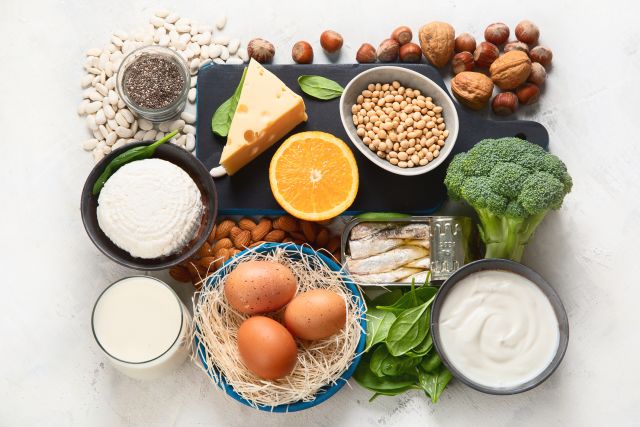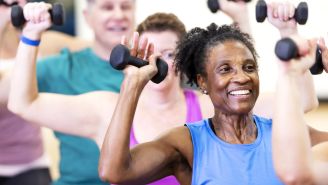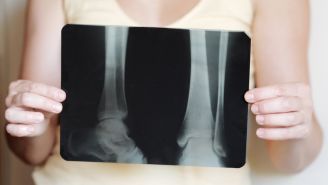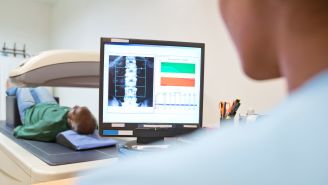Updated on June 12, 2023.
Kids are often told to drink their milk for stronger bones, but what about grown-ups? Adults, particularly those who have gone through menopause, also need milk and other calcium-rich foods to help lower the risk of osteoporosis. It's a condition that causes bones to become thin, brittle, and susceptible to breaks, and is common in postmenopausal people. In fact, in the United States, osteoporosis affects about 20 percent of women aged 50 and older and about 5 percent of men.
There are some risk factors you can’t control, like sex, age, family history, and body frame. But there is at least one risk factor you can control: your diet.
What food is good for bones and joints?
Our bones serve as scaffolding for our bodies. Because the 206 bones in the body have to fight gravity every day, they’re under continuous stress—and constantly undergoing repair. In fact, bone cells have such a high turnover rate, your skeleton remodels, or regenerates, itself every 10 years, and more often in those under age 25.
Eating calcium-rich foods that also contain vitamin D, which helps your body absorb calcium, can help improve bone strength and density and reduce the effects of osteoporosis later in life. Bone density, a measurement of how much calcium and other minerals are in your bones, usually peaks in your 20s or 30s. So, it’s important to eat bone-strengthening foods to maintain a healthy diet at all ages, and especially as you grow older.
Common calcium-rich foods
Most adults need between 1,000 and 1,200 milligrams of calcium every day depending on age. If you want to get the best bang for your buck, try these foods:
- Milk (8 oz): 300 mg per serving
- Yogurt, nonfat (8 oz): 488 mg
- Cheese (1.5 oz): 115 mg to 485 mg (harder cheese has more calcium than softer cheese)
- Soy milk (8 oz): 300 mg
- Almond milk (8 oz): 442 mg
- Dark leafy green vegetables like kale and spinach (1/2 cup cooked): 147 to 245 mg
- Tahini (sesame paste) (1 Tablespoon): 154 mg
Other foods to include: those that are fortified with calcium, like orange juice, tofu, and breakfast cereal.
What about vitamin D?
Vitamin D is measured in international units (IUs); most adults should get between 600 and 800 IUs per day. The best source for it is actually sunlight. You only need about 10 to 15 minutes of sun exposure a few times a week to reap the benefits.
Many people across the world, however, don’t get enough vitamin D from the sun. Fortunately, you can supplement your vitamin D intake with these foods:
- Salmon: 570 IUs
- Trout: 645 IUs
- Canned tuna: 40 IUs
- Fortified milk (cow, soy, almond, oat): 100 to 144 IUs
- Eggs: 41 IUs
Don’t forget the iron
Pumping iron, that is. In addition to bone-strengthening foods, weight-bearing exercise is another effective way to help prevent osteoporosis. By challenging your bones with weight and gravity, they’ll get stronger and thicker. Running, walking, and resistance exercises like weight training are best for bone strength.
Two more habits that are good for your bones, not to mention your health overall: avoiding tobacco and limiting alcohol use. If you don’t drink, don’t start. If you do drink, do so in moderation; women should have no more than one drink per day, while men should limit themselves to two.





